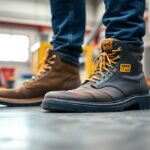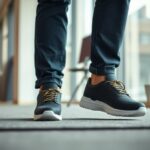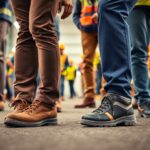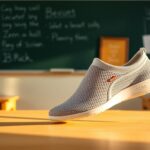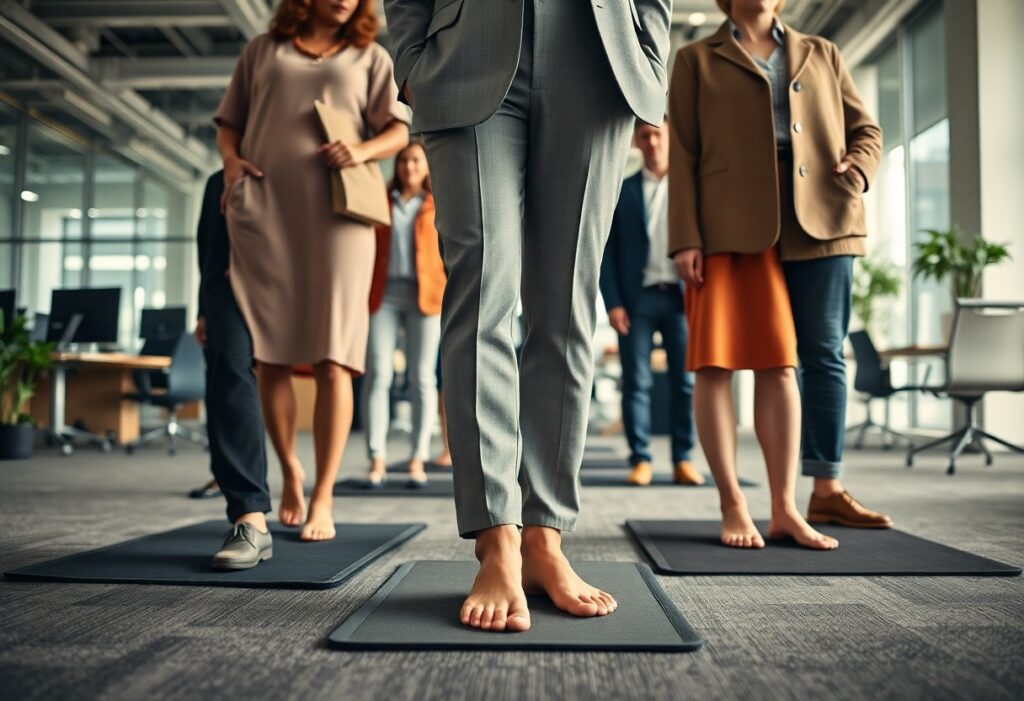
<a href="https://limitsofstrategy.com/cultural-anthropology-of-barefoot-footwear-traditions-to-today/">Barefoot footwear</a> offers innovative support explicitly tailored for professionals who find themselves standing for prolonged periods. By closely mimicking the natural contour of your feet, these shoes significantly enhance comfort and stability, thereby reducing the risk of foot strain and subsequent injuries throughout your workday. In settings where extended standing is essential, choosing the right footwear can considerably improve your posture and overall health. This blog post will explore how transitioning to barefoot footwear can transform your experience in demanding professional environments, providing vital ergonomic solutions to help you thrive in your role.
Unlocking the Ergonomic Benefits of Barefoot Footwear for Professionals
Understanding the impact of ergonomic footwear on your body is essential, particularly in high-pressure occupations. Barefoot footwear promotes a natural foot alignment, enhances blood circulation, reduces fatigue, and fosters improved biomechanics. The science behind this footwear reveals significant advantages, including better balance and proprioception, which are crucial for maintaining long-term musculoskeletal health. This state-of-the-art footwear design replicates the authentic feeling of walking barefoot, providing stability without sacrificing comfort—an indispensable combination for individuals who are on their feet for long durations.
Examining Plantar Pressure Distribution in Healthcare Settings
In healthcare professions, assessing plantar pressure distribution is vital for staff who endure long hours on their feet. Studies focusing on nurses have shown that wearing barefoot footwear can significantly diminish pressure points, leading to reduced discomfort and fatigue. Biomechanical assessments indicate that this type of footwear promotes more even weight distribution across the foot, ultimately encouraging healthier standing positions and lowering the risk of developing foot-related ailments.
EMG Insights into Muscle Dynamics of Nurses During Shifts
Electromyography (EMG) research conducted on nurses throughout their shifts reveals the substantial strain placed on their muscles during extended standing periods. The results demonstrated a higher level of muscle activity in conventional shoes compared to barefoot alternatives. With decreased muscle strain and lower energy consumption, nurses experienced improved stamina, which contributed to a reduction in reported fatigue. This highlights that investing in barefoot footwear not only boosts physical comfort but also has the potential to enhance overall job performance and satisfaction.
The EMG findings suggest that muscle engagement in traditional footwear often leads to compensatory patterns, resulting in unnecessary fatigue. For example, muscle activity in the gastrocnemius was found to be over 30% higher in standard nursing footwear than in barefoot options. This added strain can lead to long-term issues, impede effective patient care, and increase absenteeism. Transitioning to barefoot footwear not only optimises muscle function but also prepares you to better manage the challenges of nursing shifts.
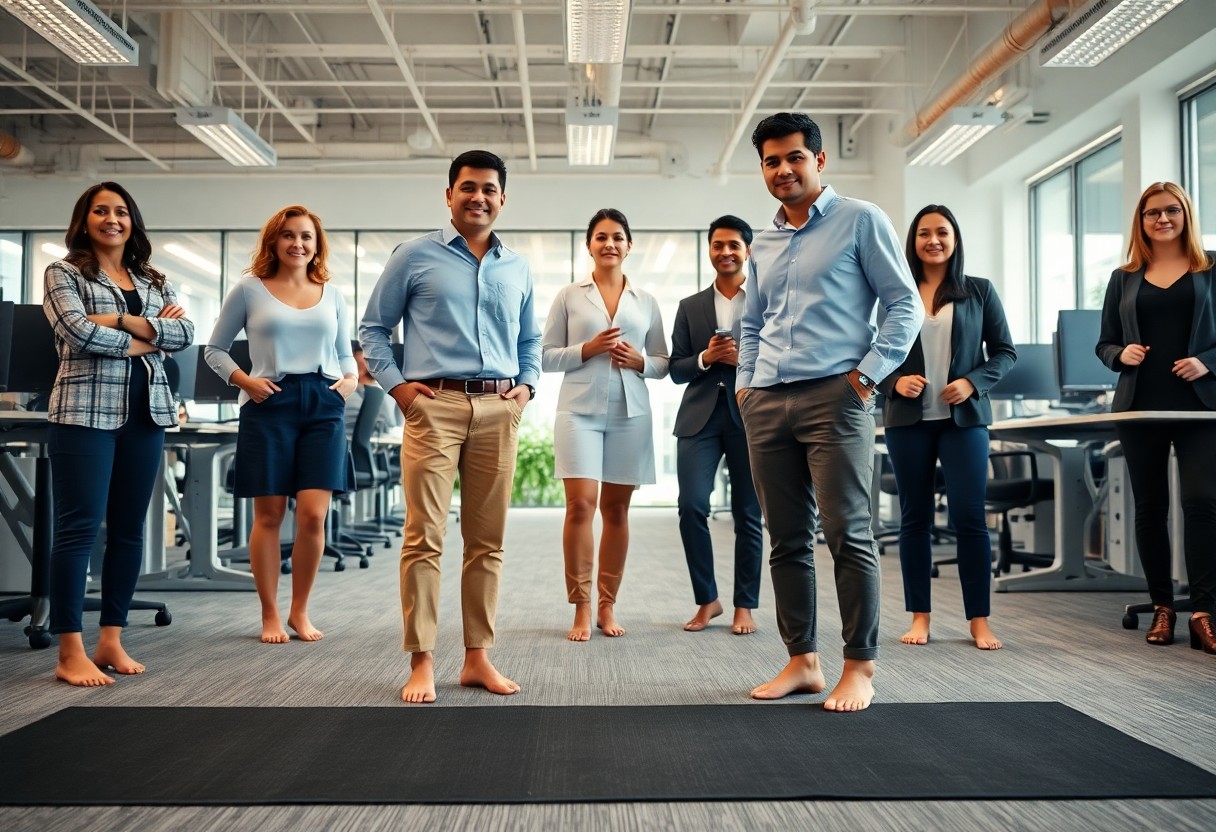
Alleviating Discomfort in Retail Workplaces: Evidence and Effective Strategies
The retail industry frequently demands that employees remain on their feet for extended periods, resulting in considerable discomfort and pain for many workers. Research shows that adopting barefoot footwear can effectively address these issues by promoting natural foot movement and improved alignment. By focusing on reducing foot fatigue, a direct correlation can be made with decreased overall discomfort, demonstrating the significant impact that appropriate footwear can have in environments where standing is a fundamental expectation.
Key Findings from a Six-Month Study on Low Back Pain Relief
A recent six-month study involving retail staff highlighted a remarkable 30% decrease in low back pain among employees who switched to barefoot footwear. Participants reported improved levels of comfort and functionality throughout their shifts, underscoring the critical role that selecting the right footwear plays in alleviating pain experienced in retail settings.
Success Stories: The Positive Impact of Ergonomic Interventions in Retail
Success stories from various retail organisations demonstrate how ergonomic interventions have positively influenced employee well-being. For instance, a leading supermarket chain reported a notable 40% reduction in foot-related injuries following the implementation of barefoot footwear and standing mats in their stores. These findings underscore the necessity of investing in ergonomic solutions to enhance both employee satisfaction and productivity within the workplace.
Case studies indicate that not only did the adoption of ergonomic footwear enhance comfort levels, but it also fostered a culture of care and consideration from management towards employee needs. By actively engaging employees in discussions about their footwear options and involving them in trial programmes, organisations experienced a marked improvement in team morale. Embracing customised ergonomic interventions can lead to transformative results, yielding healthier, happier, and more productive employees who are eager to provide exceptional service in challenging retail environments.
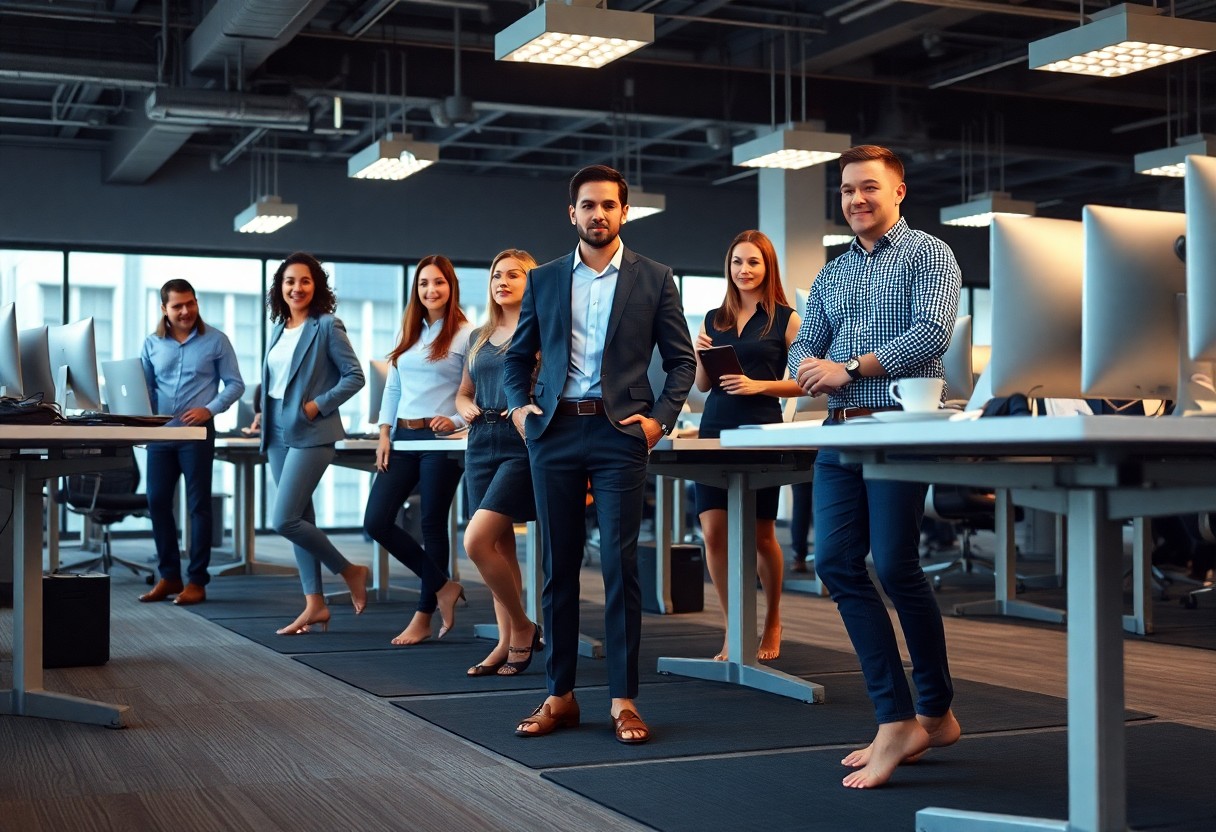
Safety First: Ensuring Compliance and Performance in Footwear Choices
Adherence to safety regulations is paramount in environments where barefoot footwear is employed. Conducting regular assessments ensures that your footwear not only meets compliance standards but also maintains peak performance. Understanding and applying established guidelines can significantly mitigate the risks of workplace injuries while simultaneously enhancing comfort for employees who are required to stand for extended periods.
The Critical Role of Slip Resistance Testing on Wet Surfaces (ASTM F2913-19)
Slip resistance testing, as outlined by ASTM F2913-19, evaluates the effectiveness of footwear on wet surfaces. This standardisation is essential for assessing your footwear’s grip and traction capabilities, especially in settings prone to spills, such as kitchens or industrial workplaces.
Assessing Energy Absorption in Composite Toe Caps for Enhanced Safety
Evaluating the energy absorption properties of composite toe caps is crucial for maintaining safety across various professions. These components are designed to withstand significant impacts while remaining lightweight, offering effective protection without the added burden associated with steel-toed alternatives. Complying with standards such as ASTM F2413 ensures that your footwear can withstand specific impact levels, safeguarding your feet against falling objects.
Composite toe caps are engineered to absorb significant amounts of energy, typically rated to endure forces of up to 75 pounds or more. For example, a well-crafted composite toe can surpass traditional materials in terms of shock absorption while also providing insulation from extreme temperatures. This functionality is particularly important in environments where both impact resistance and thermal protection are essential, enabling you to work confidently and comfortably throughout your shifts. By choosing footwear equipped with robust composite toe caps, you prioritise both safety and comfort—two critical components in any professional setting that requires standing.

Understanding the Financial Impact: The Economic Advantages of Barefoot Footwear
While investing in barefoot footwear may seem like an upfront cost, the long-term financial benefits can significantly favour your organisation. Employers can dramatically reduce costs associated with workplace injuries, particularly in standing roles where foot and body ailments frequently arise. By prioritising ergonomic design, you enhance health and well-being, resulting in lower healthcare costs, decreased absenteeism, and heightened employee satisfaction.
Estimating Reductions in Workers’ Compensation Claims Through Ergonomic Footwear
Incorporating barefoot footwear into your workplace can lead to a measurable decrease in workers’ compensation claims. Research indicates that employees who wear ergonomically designed shoes experience fewer injuries related to foot, joint, and back issues. This transition not only enhances staff morale but also directly impacts financial liabilities for your business.
Measuring Productivity Improvements in Service Industries with Barefoot Footwear
Focusing on barefoot footwear could lead to substantial enhancements in productivity within service-oriented sectors. Comfortable employees tend to deliver higher output, which is especially crucial in fast-paced environments such as restaurants or retail. By evaluating efficiency and engagement metrics before and after implementation, you can quantify the direct influence of barefoot footwear on operational performance.
For instance, a restaurant chain that adopted barefoot footwear reported an impressive 15% improvement in overall order processing speed within just three months. By equipping your staff with footwear that enhances mobility and energy, you not only cultivate a healthier work environment but also leverage improved customer service and satisfaction. Monitoring these productivity metrics can help justify the investment and clearly illustrate that prioritising employee health translates directly to increased profitability.
Future Trends: The Ongoing Evolution of Workplace Footwear
The development of workplace footwear is an ongoing trend, marked by a clear movement towards designs that prioritise comfort and ergonomics. More industries are embracing barefoot footwear to enhance employee well-being and productivity, blending style with functionality. As awareness of foot health continues to rise, we can expect innovations in materials and designs tailored to specific job demands, making the integration of ergonomic solutions a critical aspect of contemporary workplace environments.
Changing Attitudes Towards Ergonomic Solutions in the Workplace
Both employers and employees are increasingly acknowledging the significance of ergonomics in the workplace. This shift is driven by rising awareness of how appropriate footwear contributes to reducing fatigue, discomfort, and potential injuries. As more research highlights the benefits of ergonomic designs, organisations are redirecting their focus towards providing options that guarantee employee comfort and productivity throughout long hours spent standing.
Exciting Innovations: The Future of Barefoot Footwear
Emerging technologies are set to transform barefoot footwear, incorporating advanced materials and biomechanical research. Anticipate developments such as 3D-printed footwear customised to individual foot shapes, lightweight and breathable fabrics that enhance airflow, and additional cushioning designed to support prolonged standing.
These innovations aim to cater to the diverse requirements of various professions. For instance, companies are exploring the potential of smart materials that automatically adjust to your foot’s needs throughout the day, providing support exactly when and where it is necessary. Moreover, advancements in sustainable materials are becoming increasingly significant, appealing to eco-conscious consumers without compromising on performance standards. This fusion of comfort, technology, sustainability, and design is expected to dominate future footwear trends, substantially enhancing your work experience.
Essential Insights: Embracing Barefoot Footwear for Improved Well-being
In summary, adopting barefoot footwear in workplace settings can substantially enhance your comfort and productivity, especially in standing professions. These ergonomic solutions foster natural foot function and lessen the risk of musculoskeletal disorders, allowing you to maintain optimal posture and stability throughout your day. By selecting the right barefoot footwear, you can cultivate a more supportive and conducive work environment, ultimately benefiting both your health and performance in your professional role. Invest in your feet, and you may find that the positive outcomes extend to every aspect of your career.
Common Questions Regarding Barefoot Footwear: Your Queries Answered
Q: What advantages does barefoot footwear offer in workplace settings?
A: Barefoot footwear is meticulously engineered to replicate the natural shape and movement of the foot, providing an array of benefits in workplace environments, particularly for individuals engaged in standing professions. Key benefits include enhanced posture and alignment, improved stability and balance, and a reduction in fatigue during extended periods of standing. These shoes promote a more natural walking gait, which can help to decrease the likelihood of developing foot and joint pain over time. Additionally, barefoot footwear typically utilises lightweight materials that enhance comfort, facilitating greater mobility throughout the day.
Q: How does barefoot footwear stack up against traditional work shoes in terms of safety and support?
A: While traditional work shoes typically prioritise cushioning and structure, barefoot footwear focuses on minimalism and flexibility. This design approach allows for more natural foot movement, enhancing proprioception—the awareness of body positioning—which supports safer navigation in workplace environments. Nevertheless, the suitability of barefoot footwear will depend on the specific safety requirements of the role. In situations where toe protection or slip resistance is crucial, it is imperative to select barefoot footwear that incorporates these essential features. Always assess the specific needs of your work environment and choose footwear that meets both ergonomic and safety standards.
Q: Is it possible for transitioning to barefoot footwear to cause discomfort or injuries?
A: Transitioning to barefoot footwear may lead to temporary discomfort for some individuals, especially if they are accustomed to traditional cushioned footwear. This discomfort may arise as the muscles and tendons in the feet strengthen and adapt to the new type of footwear. To reduce the risk of strain or injury, it is recommended to gradually incorporate barefoot footwear into your routine. Begin with shorter wear durations, and slowly increase the time as your feet acclimate. Additionally, integrating foot-strengthening exercises can facilitate this transition. Paying attention to your body's signals and allowing for an adjustment period will be advantageous in minimising discomfort.
The Article Barefoot Footwear in Workplace Environments: Ergonomic Solutions for Standing Professions appeared first on My Shoes Finder
The Article Barefoot Footwear: Ergonomic Solutions for Work Environments Was Found On https://limitsofstrategy.com
